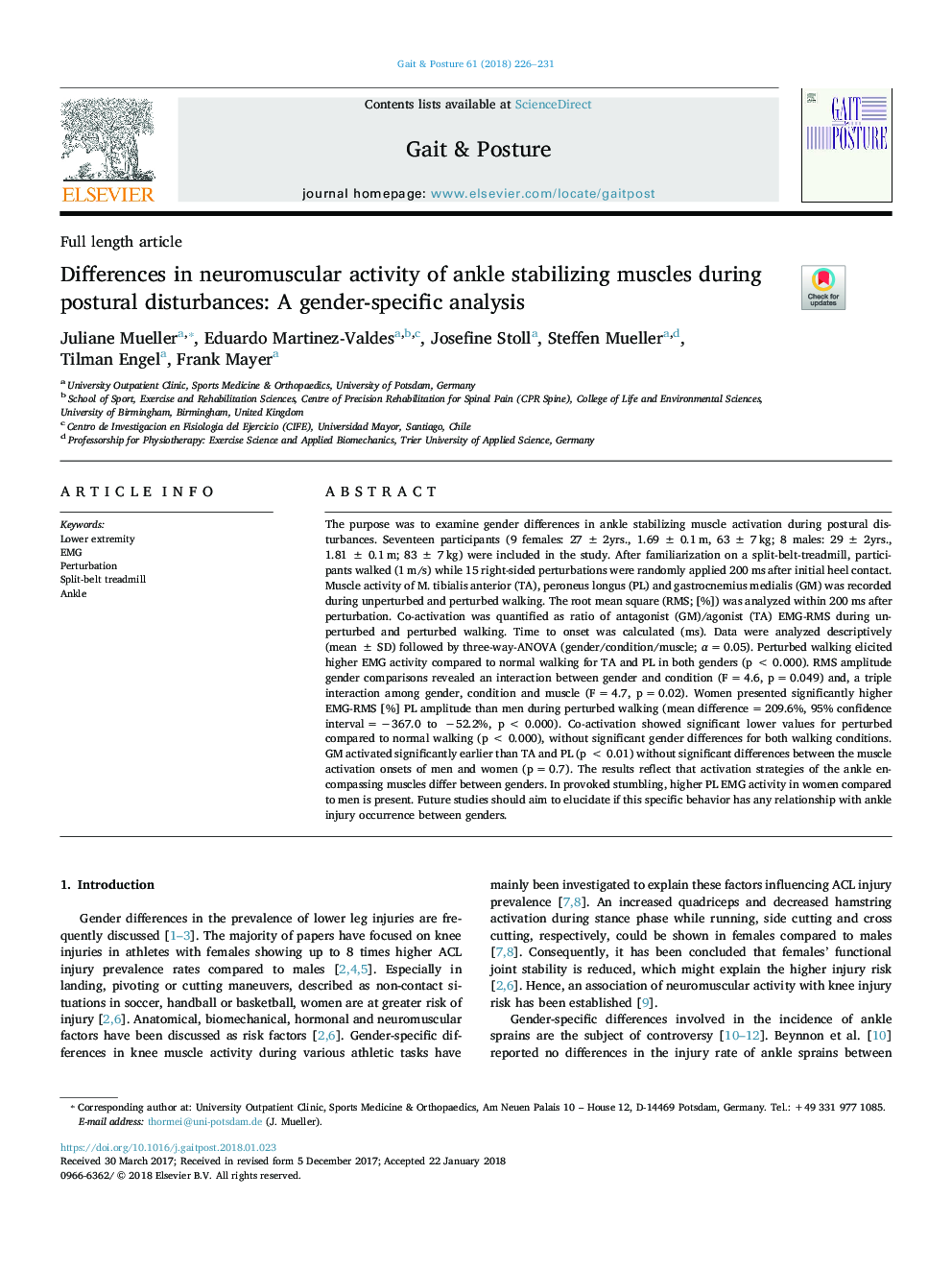| Article ID | Journal | Published Year | Pages | File Type |
|---|---|---|---|---|
| 8798521 | Gait & Posture | 2018 | 6 Pages |
Abstract
The purpose was to examine gender differences in ankle stabilizing muscle activation during postural disturbances. Seventeen participants (9 females: 27â¯Â±â¯2yrs., 1.69â¯Â±â¯0.1â¯m, 63â¯Â±â¯7â¯kg; 8 males: 29â¯Â±â¯2yrs., 1.81â¯Â±â¯0.1â¯m; 83â¯Â±â¯7â¯kg) were included in the study. After familiarization on a split-belt-treadmill, participants walked (1â¯m/s) while 15 right-sided perturbations were randomly applied 200â¯ms after initial heel contact. Muscle activity of M. tibialis anterior (TA), peroneus longus (PL) and gastrocnemius medialis (GM) was recorded during unperturbed and perturbed walking. The root mean square (RMS; [%]) was analyzed within 200â¯ms after perturbation. Co-activation was quantified as ratio of antagonist (GM)/agonist (TA) EMG-RMS during unperturbed and perturbed walking. Time to onset was calculated (ms). Data were analyzed descriptively (meanâ¯Â±â¯SD) followed by three-way-ANOVA (gender/condition/muscle; αâ¯=â¯0.05). Perturbed walking elicited higher EMG activity compared to normal walking for TA and PL in both genders (pâ¯<â¯0.000). RMS amplitude gender comparisons revealed an interaction between gender and condition (Fâ¯=â¯4.6, pâ¯=â¯0.049) and, a triple interaction among gender, condition and muscle (Fâ¯=â¯4.7, pâ¯=â¯0.02). Women presented significantly higher EMG-RMS [%] PL amplitude than men during perturbed walking (mean differenceâ¯=â¯209.6%, 95% confidence intervalâ¯=â¯â367.0 to â52.2%, pâ¯<â¯0.000). Co-activation showed significant lower values for perturbed compared to normal walking (pâ¯<â¯0.000), without significant gender differences for both walking conditions. GM activated significantly earlier than TA and PL (pâ¯<â¯0.01) without significant differences between the muscle activation onsets of men and women (pâ¯=â¯0.7). The results reflect that activation strategies of the ankle encompassing muscles differ between genders. In provoked stumbling, higher PL EMG activity in women compared to men is present. Future studies should aim to elucidate if this specific behavior has any relationship with ankle injury occurrence between genders.
Related Topics
Health Sciences
Medicine and Dentistry
Orthopedics, Sports Medicine and Rehabilitation
Authors
Juliane Mueller, Eduardo Martinez-Valdes, Josefine Stoll, Steffen Mueller, Tilman Engel, Frank Mayer,
